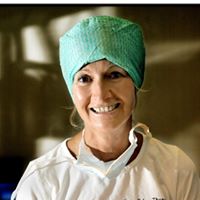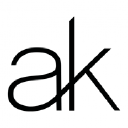PLASTIC SURGERY IN DENMARK
The common concern of women about to undergo a breast augmentation or reduction are future scars: will they be visible? Will I be able to hide them?
For the insertion of the prostheses or for the reduction of the breasts, the mammoplasty operations require particular incisions to access the area of interest, incisions that one day will be scars. In reality, precisely to prevent these scarring results from becoming evident over the years, there are strategic points in which to make the incisions.
During the preliminary examination, the doctor, based on analyzes of the patient's anatomy, the desired results and the size and shape of the future breasts, shows the points where the incisions will be made. From the combination of these and other elements, the surgeon, after having carefully explained the operating procedures to the patient, decides to make the incisions according to the ideal operating scheme for the case.
For breast augmentation in Denmark the sites of the body where the incisions are usually made are the inframammary area, i.e. a cut under the natural fold of the breast that will be invisible once sutured and completely healed. In other cases, the incisions are peri-areolar, i.e. around the nipple and therefore invisible once healed, as they are hidden by the natural detachment of pigmentation between the skin and the nipples.
The transaxillary incision is also distinguished in which the cut for the insertion of the prosthesis is made in the axillary sulcus, thus avoiding having to incise the breast.
Also in this case the scar is hidden under the armpits and therefore not evident.
On the other hand, there are several incisions envisaged for breast reduction, distinct respectively in L or inverted T. To establish the positioning of the nipples and the mass of tissue to be removed, the surgeon makes operating marks, the first is circular, to establish the place where the areola will be positioned, and then others below which are useful for establishing the points from which set off to remove excess tissue.
The incision that could be more evident once sutured and healed at the end of the mammoplasty is the vertical one but with time and with some precautions prescribed by the surgeon, the scars will disappear, giving way only to the beauty of the new breast.
GOODBYE LOVE HANDLES: COME TO DENMARK
Although apparently this expression could indicate something good, in reality the love handles represent for many a real obstacle to achieving a perfect silhouette. This is because, when we talk about love handles, we refer properly to that annoying accumulation of fat above the pelvis that sometimes physical exercise alone does not seem to be enough to eliminate them.
The imperfection, also known as "butterfly shape" or butterfly wings, affects not only the male sex, often interested in obtaining a perfect sculpted abdomen but also the female one who especially after pregnancy finds herself having to deal with a few pounds of too much.
Usually to remedy the love handles, one immediately resorts to strict diets associated with physical activity but sometimes when even the constant commitment does not seem to give good results, plastic surgery presents itself as the only lifeline.
With one operation it is in fact possible to say goodbye to love handles forever, to eliminate those annoying adipose accumulations that compromise the harmony of the body. This is the liposculpture surgery .
First of all it is important to clarify that this operation is not aimed at achieving weight loss but simply at defining and modeling the shape of the body, reducing the accumulation of fat where it is needed to obtain a perfect silhouette.
The operation can also be performed on an outpatient basis, requires local anesthesia with light sedation thus reducing heavy sequelae for the patient in hospital. For the reduction of fat, liposculpture uses special cannulas with decreasing diameter (for this reason also called three-dimensional liposculpture) which allow to remove portions of localized fat and at the same time, to obtain a tightening effect on the skin.
In just over 60 minutes the surgery was completed.
POLYURETHANE PROSTHESES: REAL ADVANTAGE IN DENMARK?
Still too little is known about the prostheses used for breast augmentation and what is known usually concerns silicone implants.
In reality, besides this type of prosthesis, there are those in polyurethane but there are still some doubts regarding the safety and validity of their use.
Polyurethane implants in Denmark are structurally similar to silicone gel implants but with the main difference that their external surface is, in this case, covered with a particular layer of polyurethane foam. The main function of this surface seems to be precisely that of minimizing the risk of capsular contracture formation compared to smooth and textured implants.
Furthermore, it seems that the polyurethane implant allows the surgeon to use anatomically shaped prostheses without fear of possible rotation, especially on particularly thin patients.
However, although they prove to be a good lifeline for avoiding the removal of the fibrous capsule, their insertion during the operation is particularly complicated. Once positioned, in fact, should it be necessary to remove them, the surgeon may encounter some difficulties since polyurethane prostheses tend to take root in the capsular tissue and are therefore difficult to remove.
Furthermore, their use seems to prolong the post-operative phase, so in the first months, the breasts are slightly more rigid.
Therefore, it is not possible to state 100% that this type of implant is or will be preferred for breast augmentation operations. Like any new or recent novelty in the field of medicine and cosmetic surgery, polyurethane prostheses have also been the object of criticism, going through flourishing periods alternating with negative ones.











